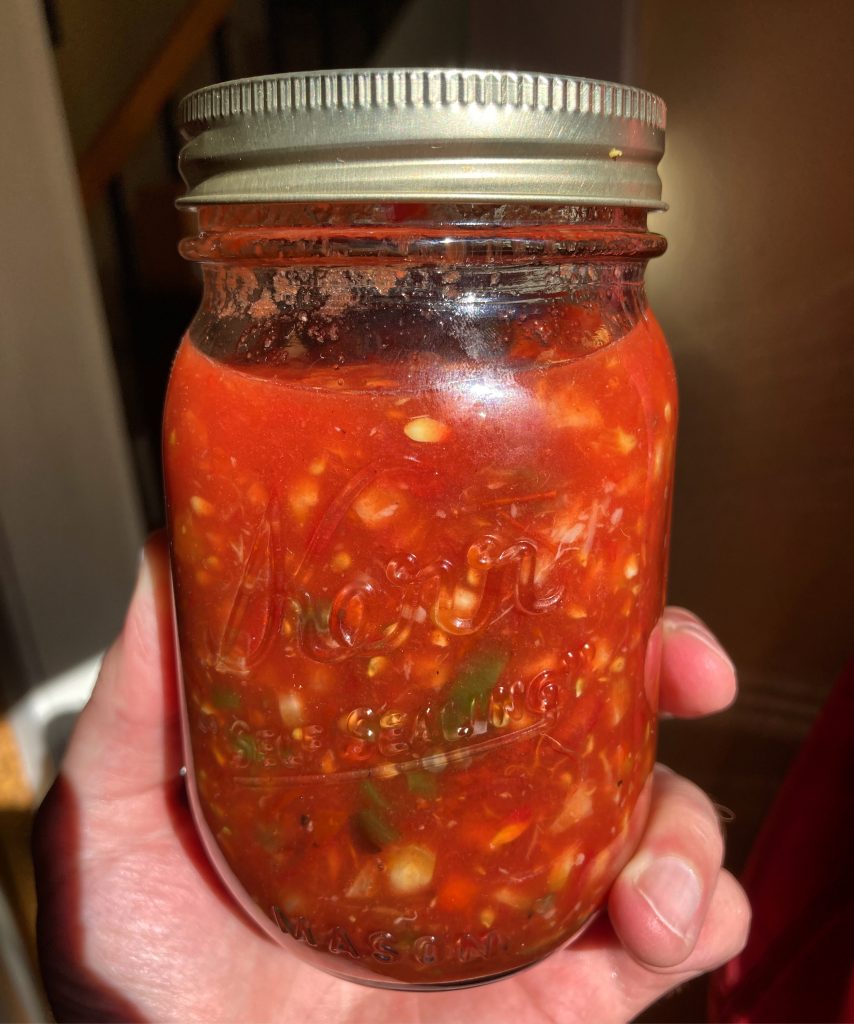(Another day, another blog post with a vegetarian recipe! Again, I’m not turning this into a food blog, but this is just something I’ve been meaning to write up for a while, and I made it last night so the timing is right.)
I was going to just put “meat” in quotes in the title, but (a) I was thinking about SEO (yes, I’ve become that person) and (b) I realized that, for this recipe, “balls” really needs to be in quotes just as much as “meat”. You’ll see why when you cook them. Let’s just say neither “meatmuffins” nor “meatpucks” really works, for obvious reasons. I seem to keep mistyping the word as “metaballs” which I actually think is quite appropriate. But, you know… SEO.
Also just a word of caution… this is definitely not vegan, and it’s not particularly “healthy”. But it’s a bit of that “hygge” everyone’s after these days (even though that’s Danish).
I’ve been eating vegetarian/pescatarian for the last 5 1/2 years, but I’ve been a Minnesotan of mixed Scandinavian descent my entire life. So, yes… I’ve been quite familiar with Swedish meatballs for a long time. Well before Minnesota finally got an IKEA store in the mid-2000s.
In fact, I’ve made the meat variety of Swedish meatballs so many times that I still have the recipe memorized, even though I haven’t tasted them since 2013. Granted, my kids are not vegetarians, so I still have to occasionally make the traditional version for them. But last year I finally cracked the code on a vegetarian version. For a while I’d just use general-purpose frozen vegetarian “meatballs” and cook them in a vaguely Swedish cream sauce. I even used “GRÖNSAKSBULLAR” from IKEA. (Why does IKEA do everything in all-caps? It’s awfully shouty for mild-mannered Swedes.) They’re not bad… but they’re not right for this dish, either.
There’s a certain chunky texture that proper Swedish meatballs need, and the processed smoothness of frozen “meatballs” — plus the lack of the correct spices — just won’t cut it. So I turned to another processed frozen meat substitute… “crumbles”.
Yes, the secret to my vegetarian Swedish “meatballs”, if I’m being precise about it, is MorningStar Farms® Grillers® Crumbles™. (I copy-pasted that from their website to make sure I got all of the trademarks right.)
That, and a muffin tin.
This mixture isn’t as firm as one with ground beef, so you can’t shape balls by hand. That’s where the muffin tin comes in, as well as the slightly odd shape of the final product. We’ll be baking these instead of browning them in a skillet as with traditional Swedish meatballs.
This recipe also involves one of my favorite skills I have acquired as a cook: making a good sauce. Whether it’s gravy, béchamel, or whatever you want to call it, the principle is the same: 4 tbsp fat, 4 tbsp flour, 4 c flavorful liquid. Cook the fat and flour together for a minute, then gradually add the liquid, stirring constantly to absorb completely and keep the consistency smooth. Once you “get it”, it’s simple and awesome. But I rarely see it described correctly.
OK, enough Minnesota small talk. Let’s get cooking!
Vegetarian Swedish “Meatballs”
Makes 4 to 6 servings.
Ingredients
For “Meatballs” (a.k.a. Metaballs)
1/2 tbsp butter
1/2 tbsp vegetable oil
1 small(-ish) onion, very finely chopped; reserve 1-2 tbsp for cream sauce
1 12-oz pkg MorningStar Farms® Grillers® Crumbles™ or similar
3 eggs, lightly beaten
3 slices stale(-ish) bread, processed to fine crumbs
1 tsp (or so) freshly grated nutmeg
1/2 tsp ground allspice
1 tsp kosher salt
1/2 tsp freshly ground black pepper
For Cream Sauce:
2 tbsp butter
2 tbsp vegetable oil
4 tbsp flour
3 c vegetable broth
1/2 c milk and 1/2 c cream
(or just 1 c milk if you’re pretending this is healthy)
pinch of nutmeg
pinch of allspice
2 tbsp ketchup
(or 1 tbsp Worcestershire sauce if ketchup sounds too weird to you)
salt and pepper to taste
minced fresh dill or dried dill weed for garnish
Preparation
Stuff you’ll need to have ready before you start:
- a large (12-inch), high sided skillet
- a 12-cup muffin tin, greased and floured
- a large mixing bowl
- Preheat oven to 375ºF.
- In large skillet, melt 1/2 tbsp butter with 1/2 tbsp oil over medium heat. Add the onions (except reserve), and cook about 3 minutes until softened. Stir in entire package of crumbles, cover and set to medium-low for 3-5 minutes. You’re just trying to thaw the crumbles, not cook them! Check periodically and break up big pieces as they thaw. Remove from heat as soon as crumbles are soft.
- Meanwhile, in a large mixing bowl, stir breadcrumbs into beaten eggs with nutmeg, allspice, salt and pepper. When the crumbles and onions are ready, add them and stir to combine thoroughly. Leave any remaining bits in the skillet as long as they’re not burned… they’ll flavor the sauce.
- Prepare your muffin tin by spraying with cooking spray and then dusting with flour. Shake out excess flour into the sink.
- Using a large spoon, scoop the mixture equally into the 12 cups of the muffin tin. Use the back of the spoon to smooth the mixture into rounded mounds inside the cups, but don’t press them too firmly. You just want them to stay together.
- Place the filled muffin tin on the center rack in the preheated oven and bake for 20 minutes. Remove muffin tin from oven and let cool.
While the muffins are baking, you can start on the cream sauce or work on anything else you need to prepare, like potatoes or vegetables. The meatballs can rest on the counter for a while if needed.
- In the same skillet you used for the onion/crumble mixture, you’ll start on the cream sauce. Add your reserved onions, 2 tbsp butter and 2 tbsp oil and heat over medium-high heat. When the butter has melted and onions are translucent (or slightly browned on the edges, depending on your taste preference), add the flour and pinches of nutmeg and allspice, and whisk gently until completely absorbed and smooth, about 1 minute.
- Turn the heat to high and gradually add the broth to the saucepan, about 2-3 tbsp at a time. Constantly whisk the mixture gently (to avoid splashing), making sure the liquid has completely absorbed before adding more. As you do this the mixture will transform in appearance from grainy clumps, to pastry dough, to mashed potatoes, and finally a creamy smoothness.
- When all of the broth has been added, whisk in the milk and cream. Bring to a boil, then reduce heat to medium-low and simmer. Stir frequently to avoid sticking or burning on the bottom of the pan. Adjust heat if needed to keep a gentle simmer.
- After sauce has thickened slightly, add ketchup (or Worcestershire sauce) and whisk to mix thoroughly.
- Gently remove baked “meatballs” from muffin tin — you should be able to twist them slightly with your hand to loosen them from the cups — making sure not to break them apart. Add them into the simmering cream sauce and continue to simmer, stirring occasionally, about 10 minutes or until sauce has reached desired thickness. Add salt and pepper to taste.
Serve 2 to 3 “meatballs” per person with mashed potatoes and a generous amount of cream sauce sprinkled with dill, along with vegetables and lingonberry or cranberry sauce.
 For the past couple of summers we’ve been members of a local
For the past couple of summers we’ve been members of a local  Scoop the dough out onto a floured surface and knead a few times, just until it comes together. Again, don’t overwork it.
Scoop the dough out onto a floured surface and knead a few times, just until it comes together. Again, don’t overwork it.


